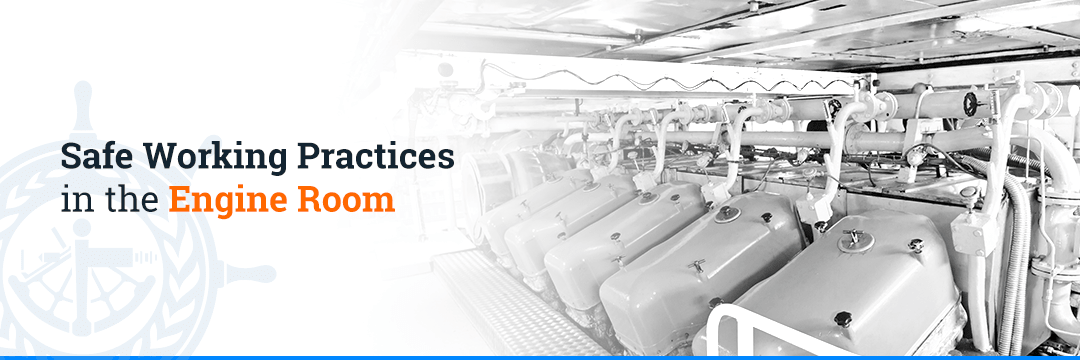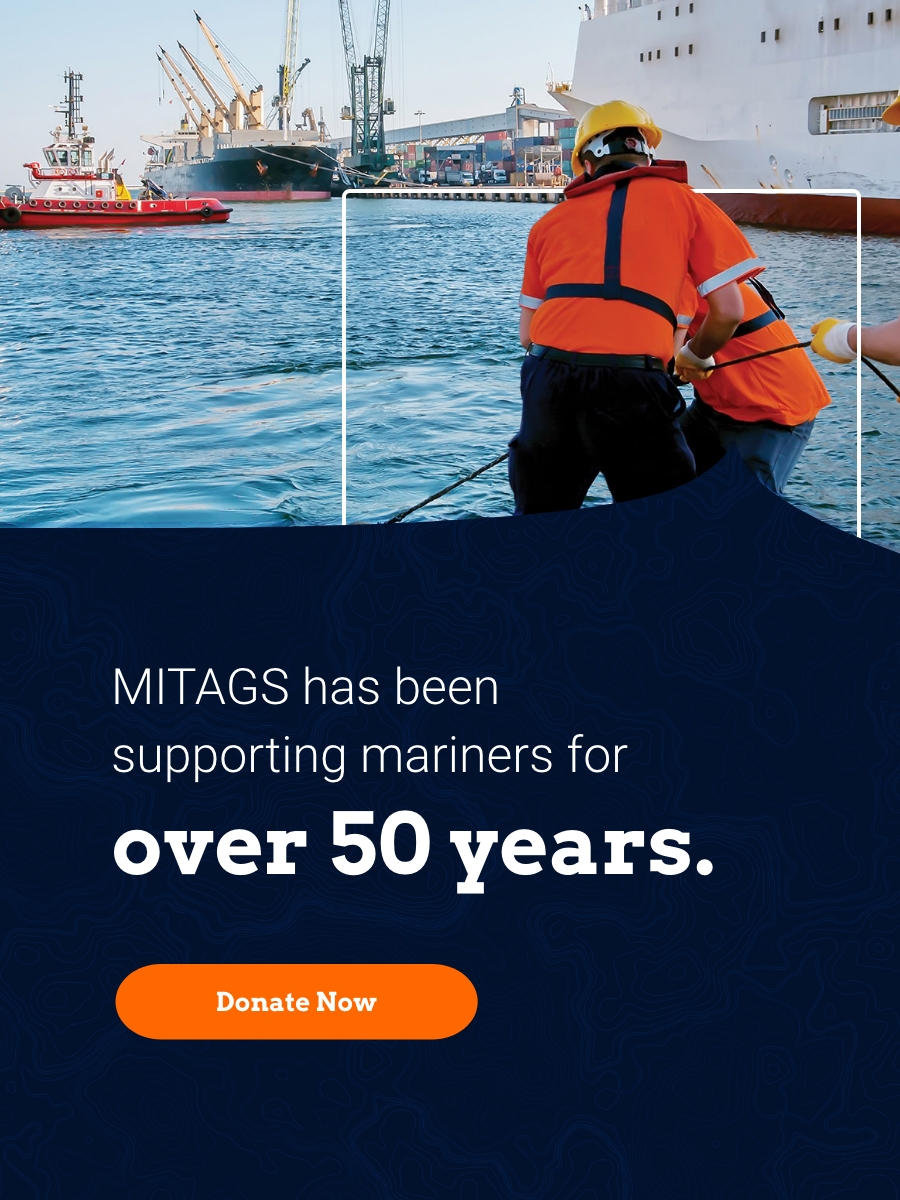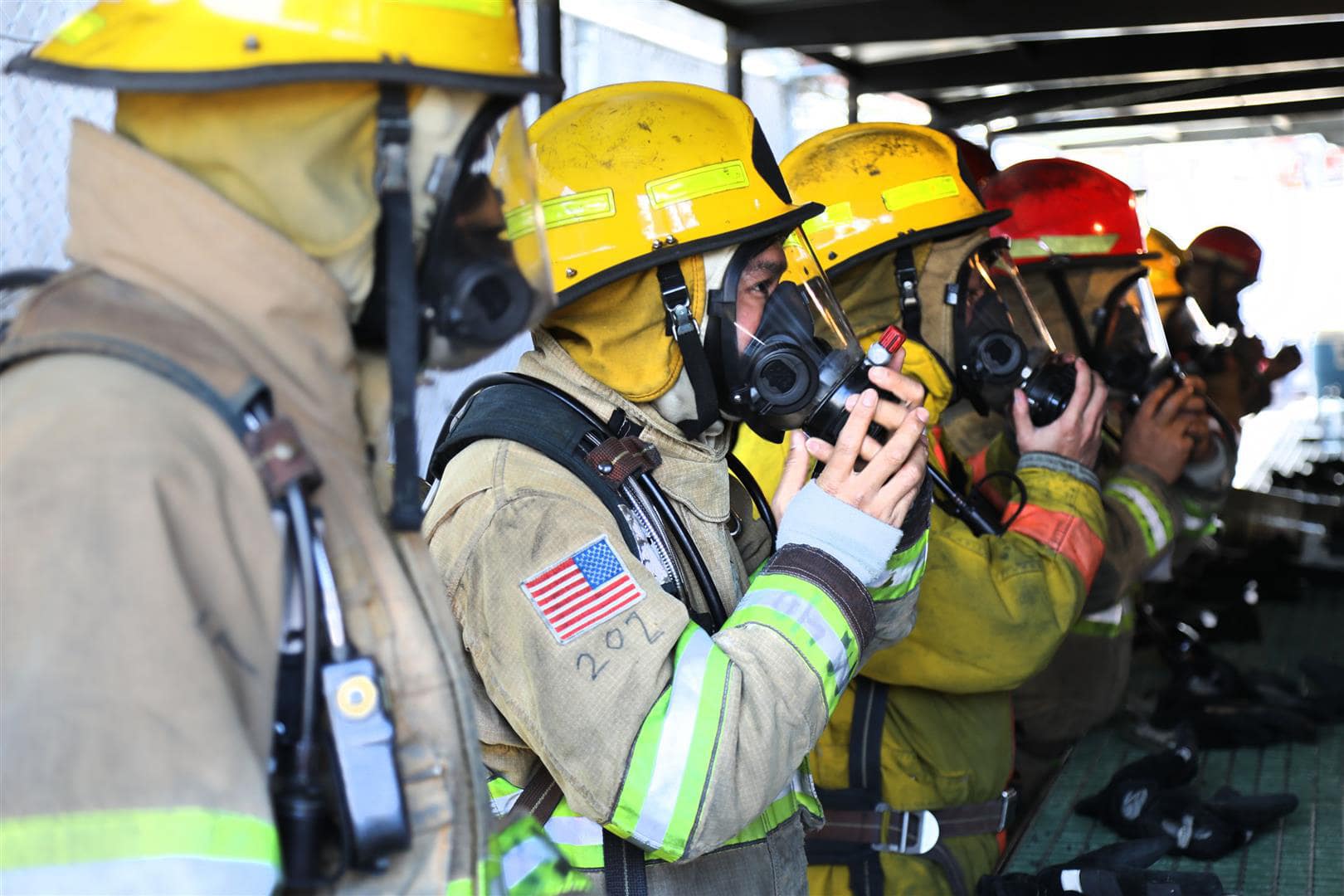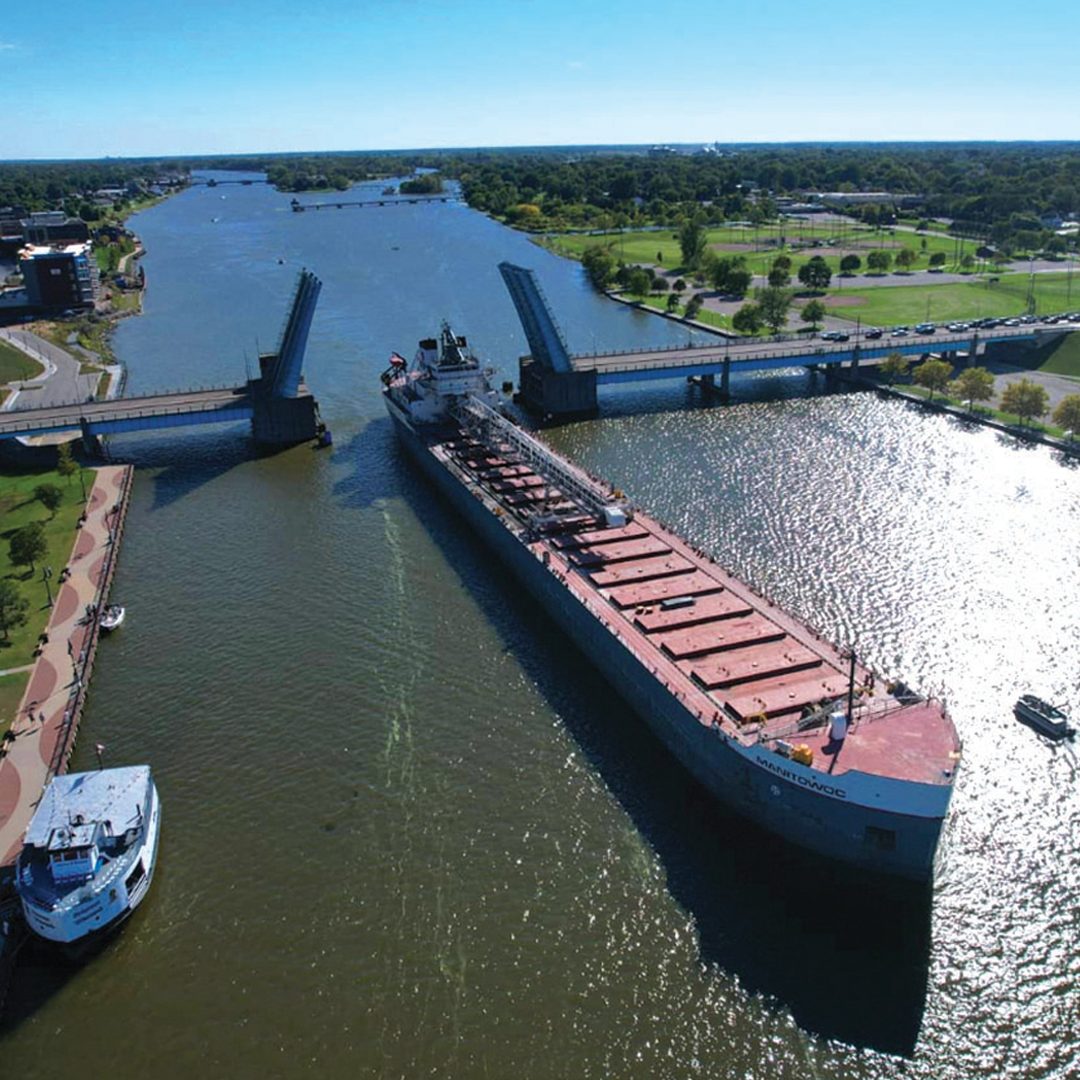Ship engine room safety is paramount. As the power center of your vessel, dysfunctional engine rooms can produce mechanical errors, downed machinery, discord and — most pressingly — extreme safety hazards for your crew.
Given a cargo ship engine room’s unique environment, it requires equally unique safety practices compared to other areas of your vessel. These safety procedures are designed to safeguard seamen from everyday complacency to cataclysmic accidents.
Use this guide as a resource for orchestrating effective engine room safety procedures to equip your crew with the right knowledge, processes and tools to combat engine room dangers. Plus, learn how to create a safety management system that ties it all together.
Why Create a Safety Management System for the Engine Room?
Safety management systems (SMS) provide the foundation for high-functioning, clean and safe operations in your ship’s engine room. Without such procedures, engine rooms may present risks for dozens of accidents, including any related to the following:
- Blocked escape routes: Disorganized engine rooms increase the chances of blocked emergency exits. Poorly maintained engine rooms may also have defective lighting, causing escape trunks not to illuminate as they should. Both these are severe safety hazards that could prevent swift evacuation in the event of emergency exits.
- Precarious waste or garbage buildup: Engine rooms inevitably create waste byproducts, particularly oil rags and other oil-cleaning materials. Exothermic reactions can trigger oily rags and discarded oil-stained supplies to ignite when near hot engines. When soaked with fuel, these rags are dangerous fire hazards in the hot environment of a ship’s engine room.
- Unsafe deck plates: Deck plating creates safe pathways for crew members to maneuver through the engine room. Slippery, tarnished, rusted or loose deck plates are common causes of slips and falls into bilges, risking serious injuries for your team.
- Jammed doors: Engine room conditions can wear and rust door hinges. Complacent housekeeping procedures in the engine room can also cause disorganization, with items blocking doors and impeding clear entries and exits.
- Working-at-height hazards: Ship engine rooms are designed with elevated decks and contain substantially sized machinery. Crew members in the engine room technically work at height and therefore need a working environment with height-related protections — including handrails, partitions, sections, chains and other physical parameters that help prevent falls.
Establishing an SMS helps control, if not minimize, these top engine room risks.
What to Include in Your Cargo Ship Engine Room’s SMS
Written SMS booklets outline proper engine room procedures and activities for all crew members. A written SMS policy should cover the following:
- Required engine room PPE, such as anti-slip safety shoes, helmets, puncture-proof gloves, protective eyewear, coveralls, and more.
- Emergency procedures outlining specific crew member’s roles and responsibilities.
- Safe working loads and capacities for engine room lifts alongside other utilized machinery and equipment.
- Protocols surrounding how to document accidents.
- Electric loads and circuit capacities to avoid overloading any system in the engine room.
- Clear communication workflows and channels among shipboard members as well as between ship crews and shored personnel.
- Environmental protection policies following flag state marine environmental regulations.
- Overall vessel details, including item storage, door securing, fitting and fixture maintenance and operational expectations across work and transit areas.
It’s essential every cargo ship or vessel crew member receives a personal copy of your SMS. Distributing these policies, then reviewing the safety procedures during formal training sessions, sets proper expectations for new and veteran crew members on how to conduct themselves within your vessel’s engine room.
In addition to creating an SMS, the following are important engine room safety practices:
- Proactive ship oil disposal protocols
- Safe bilge management and bilge area care and maintenance
- Fire safety practices and precautions
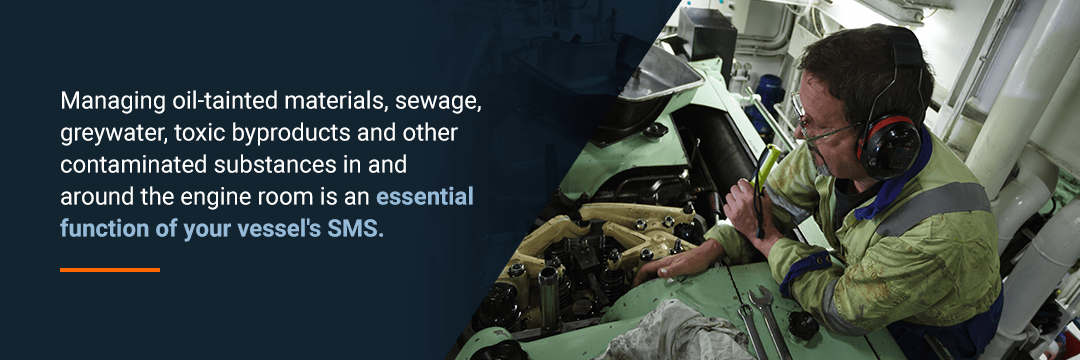
Properly Dispose of Oily, Contaminated Materials
Managing oil-tainted materials, sewage, greywater, toxic byproducts and other contaminated substances in and around the engine room is an essential function of your vessel’s SMS.
Improperly disposed of contaminants pose many threats, from onboard fire hazards to potential compliance issues with domestic marine environmental regulations. What’s more, if improperly contained, contaminated materials are linked with health problems for crew members who may be exposed to them for long periods.
Ensure your written SMS policy has a section onship oil disposal and waste management methods, including:
- Sewage and liquid waste disposal: Onboard retention tanks and installed grease traps are a must for cargo vessels to aggregate liquid waste safely. Untreatable liquid waste cannot be disposed of in areas where water supplies are drawn. Nor can liquid waste and sewage be discharged overboard into open water — with the exception of treated bilge water, which can be environmentally discharged. Retention tanks are generally emptied via shore servicing, with special hoses and barges deployed to collect waste.
- Solid waste storage: Generally, engine room-related solid waste cannot be discharged via ocean dumping. Instead, vessels must have garbage storage rooms and stainless steel retention tanks that are discarded when docked. Any sludge accumulated in engine rooms must be stored in enclosed, dedicated sludge tanks, then pumped and discarded at designated land-based facilities.
- Bilge water: Vessel bilges accumulate water from onboard sources, such as boilers and water draining systems. However, engine rooms also contribute to bilge water, notably via oil, hydraulic fluid, antifreeze and other fuel solvents. These environmentally toxic engine residues are separated from bilge greywater matter by an oily water separator (OWS), which has its own maintenance and care instructions that must be facilitated by trained crew members. Filtered water is permitted for overboard disposal when on the open sea, but the separated engine room sludge is not.
- Oil-contaminated materials: Engine rooms inevitably produce oil-stained and contaminated materials, like rags and cleaning equipment. All crude oil contaminants must be disposed of following flag state environmental regulations and cannot be dumped overboard, as oil and fuel byproducts are harmful to the ocean. Typical permitted disposal techniques include on-vessel incinerators or the transfer of oil waste to disposal facilities once docked.
Correct Bilge Management Area Maintenance
Bilge wells located in engine rooms rely on a properly functioning OWS to separate bilge greywater from oil and sludge. These two materials must be stored in separate tanks within vessel bilges, keeping each isolated before proper land or water disposal. Engine room bilges require additional care and maintenance tasks that are important for proper bilge well pumping, condensate collection and waste removal.
Neglected engine room bilges can generate material waste, especially oily residue that is a fire hazard, pollutant and health risk for engine room crew members. Oily engine room bilges can also trigger malfunctions in the overall ship’s fueling systems. Port inspectors may detain a vessel indefinitely due to improper engine room bilges.
1. How to Manage Proper Levels of Bilge Sludge
Use these maintenance best practices to ensure appropriate levels of sludge exist in ship engine room bilges:
- Optimize your vessel’s OWS: As your ship’s main line of defense against contaminated waste materials mixing, your OWS should be monitored and serviced frequently by authorized crew members. Clean your primary bilge tank often, and assess the conditions of imperative components such as steam coils, mechanical seals and inlet piping.
- Paint the bilges: If permitted, paint engine room bilges a bright color. This makes it easier to spot oil and other liquid leaks.
- Deploy drip trays: Spare leak trays should be installed wherever leaks are identified, preventing the leak from effecting other pipes, pumps or systems.
- Separate chemicals and solvent waste: These liquid wastes should not interact with engine room bilge wells, pumps or tanks — all of which are pH-sensitive. Chemical leakage can trigger pH imbalances that, in turn, change the composition of bilge greywater and make it harder for the OWS to filter materials.
- Monitor other material waste separation systems before they leach into bilge storage tanks: Find in-depth information on additional vessel waste storage tanks for things like AC condensate, boiler soot and more.
2. How to Clean the Bilge Area
Thoroughly cleaning your cargo vessel’s engine room bilge involves several key steps and tips:
- Use a power washer: Power washing your engine’s bilge area is the quickest way to clean and sanitize the environment. For safety purposes around gasoline and electrical components, opt for an air-powered pressure washer. Ensure a controlled wash with an appropriately pressured soap-dispensing attachment, as well as lengthy wands. Only authorized crew members should perform bilge cleanings, and only when wearing mouth, eye, hand and body-protecting PPE. Consider bulkhead-mounting the pressure washer and designing the well to contain its own deck drain or sink.
- Use the right cleaner: Given the mixed composition of residue and runoff in engine room bilge wells, cleaning agents must be compatible with the oily water separator. The wrong cleaner can actually make oil soluble in water, preventing filter separation and making your OWS and storage tanks useless and uncompliant.
- Be cautious when cleaning decks and deck plates: Clear dust and debris off deck plates in a separate cleaning schedule. Airborne particles from the deck area can trickle down into the bilge and taint it.
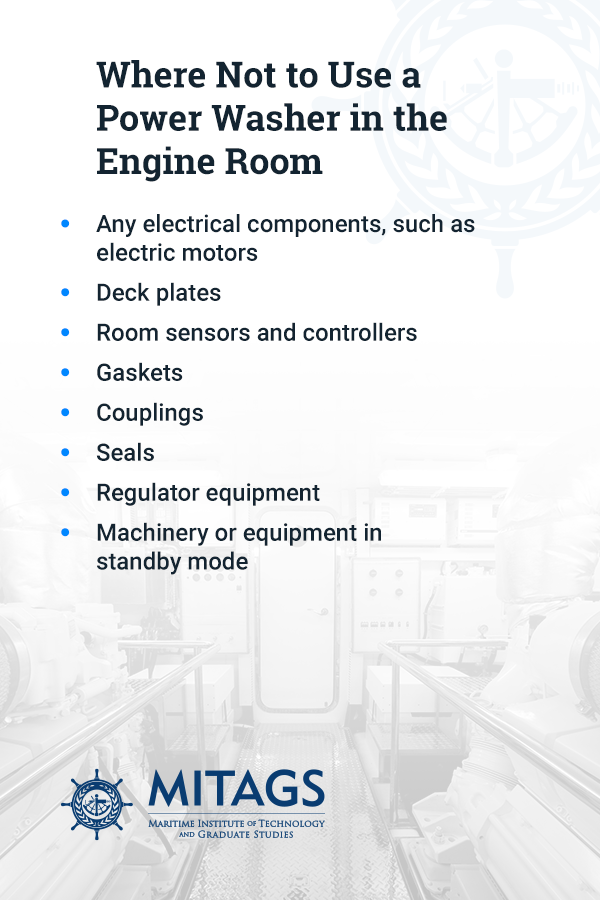
3. Where Not to Use a Power Washer in the Engine Room
While power washing is an effective way to maintain clean bilges, there are several areas and pieces of equipment inside the engine room that should never be power washed, including:
- Any electrical components, such as electric motors
- Deck plates
- Room sensors and controllers
- Gaskets
- Couplings
- Seals
- Regulator equipment
- Machinery or equipment in standby mode
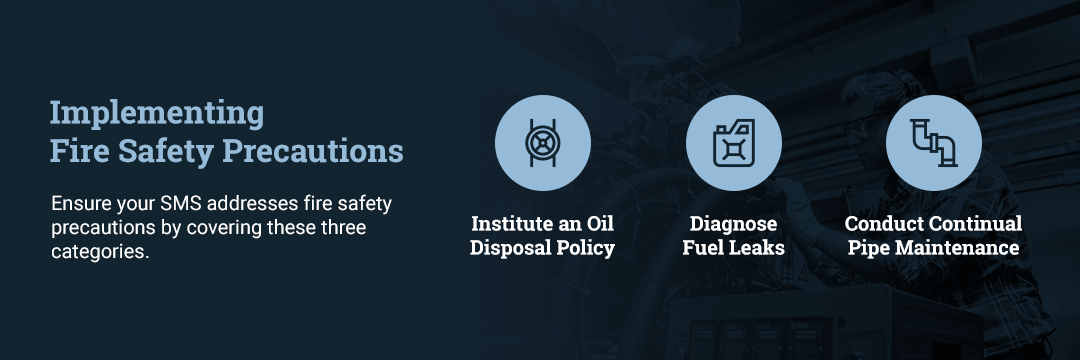
Implementing Fire Safety Precautions
One the most important tenets for safety in the engine room is fire prevention. Whether a vessel is docked or en-route, onboard fires pose one of the gravest threats to crew safety and should be prioritized when creating your vessel’s SMS.
Ensure your SMS addresses fire safety precautions by covering these three categories.
1. Institute an Oil Disposal Policy
Fuel oil is a hazardous waste material and therefore must be disposed of according to international marine and flag state laws.
Today, onboard incineration remains one of the most popular disposal methods for sludge and waste oil. Used oils are transferred via a closed designed system into a holding tank dedicated specifically for incineration. Prior to transport to that tank, water and other liquids have been filtered out by your OWS, ensuring burning success and efficiency.
Other aspects of a comprehensive onboard oil disposal policy may include:
- Creating designated disposal containers for oil rags and other oil-contaminated materials.
- Recycling used oil filters, with filters stored and saved until a vessel docks and can arrange transportation to a relevant recycling facility.
- Filtering all flammable liquids to designated, secure, anti-corrosive and temperature-stable tanks until land disposal is available.
2. Diagnose Fuel Leaks
In a best-case scenario, fuel leaks manifest as cosmetic issues, such as grimy bilges. When unaddressed, leaks from core fueling pipes hold dangerous risks in the form of a fire hazard. In fact, half of all vessel fires are caused by leaks in pressurized pipes within the engine room.
Luckily, there are several methods to diagnose fuel leaks in the engine room before they pose a catastrophic fire risk:
- Perform leakage tests: There are two primary tests to perform on your pipes: pressure tests and tightness tests. Both can reveal fissures or cracks imperceptible to the human eye. Successful tightness tests are conducted at design pressure, whereas pressure tests should be performed around 1 1/2 times design pressure for accurate results.
- Monitor sensors and gauges: Properly functioning sensors are an around-the-clock watchdog signaling issues in low- and high-pressure pipes and systems.
- Understand innate fuel risks: Ultra-low-sulfur marine gas oil is known to be more leak-prone than heavy foil oil. Vessels switching from heavy oil to ultra-low-sulfur should take extra precautions to test fueling systems and preemptively prep and repair relevant pipes.
3. Conduct Continual Pipe Maintenance
Thorough, continuous pipe maintenance for cargo ships is yet another essential aspect in engine room fire prevention. This responsibility extends to pipes transmitting flammable gases and liquids, as well as all other piping systems connected to or serving your engine room. Flaws in one piping component often signal issues in others or the urgent need for a comprehensive inspection.
Consider these pipe maintenance best practices for vessel engine rooms:
- Lag pipes to prevent dangerous overheating: Lagging pipework is particularly vital across steam pipes, fuel pipes and exhaust pipes, all of which should also be shielded.
- Inspect pipe supports for stability: Hangers, clips and beams are crucial to minimizing vibrations and shock loads that can cause pipe failure.
- Inspect pipe insulation, surveying its quality and condition: The closer to oil or fuel systems these pipes are, the more regularly you should inspect their insulation.
- Test water piping systems to ensure reactivity and functionality in the event of a real fire: Malfunctioning emergency water nozzles are uncompliant, as well as unsafe. Emergency water nozzles are a leading method to contain vessel fire incidents, should they occur.
- Check that compression joints are not fitted on any fuel pipes or pipes transmitting flammable substances: Compression joints are generally not suited for these types of pipes and are far more susceptible to leakage.
- Minimize joint structures on pipes transporting flammable gases or liquids: Regularly inspect the joint connections of these pipes, particularly at T-intersections, ensuring each is shielded from coming into contact with surrounding hot surfaces — especially when located near oil systems.
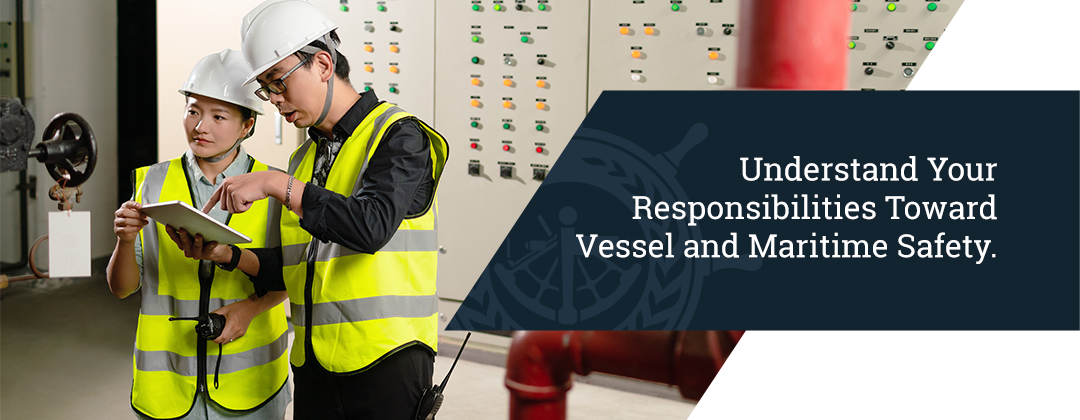
Understand Your Responsibilities Toward Vessel and Maritime Safety
Contact MITAGS for educational resources on ship engine room safety, as well as other resources and best practices for mitigating maritime health and safety risks on cargo ships.

